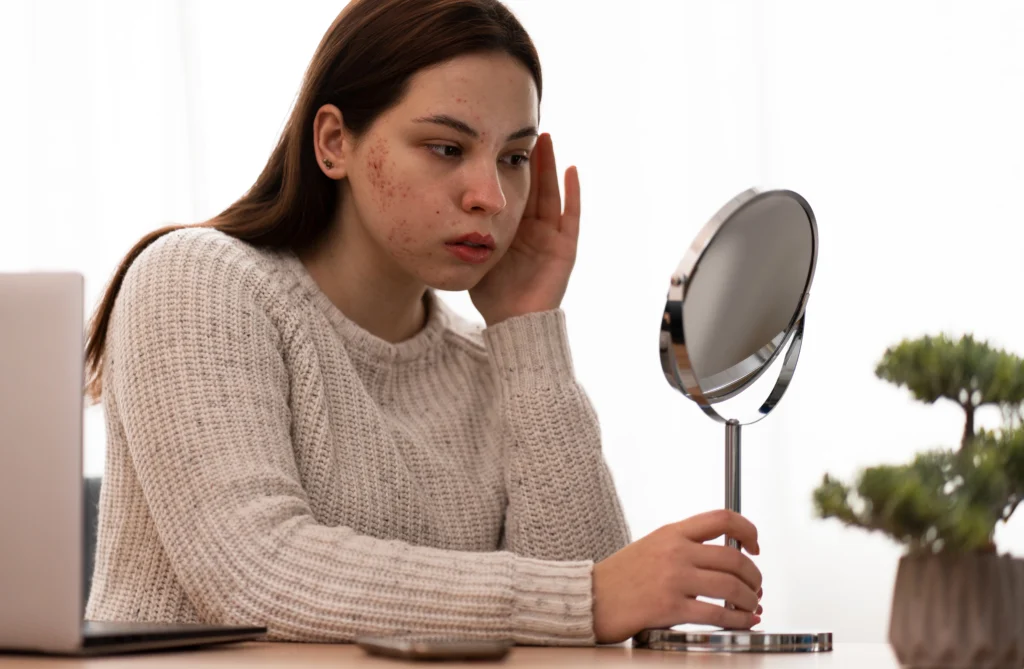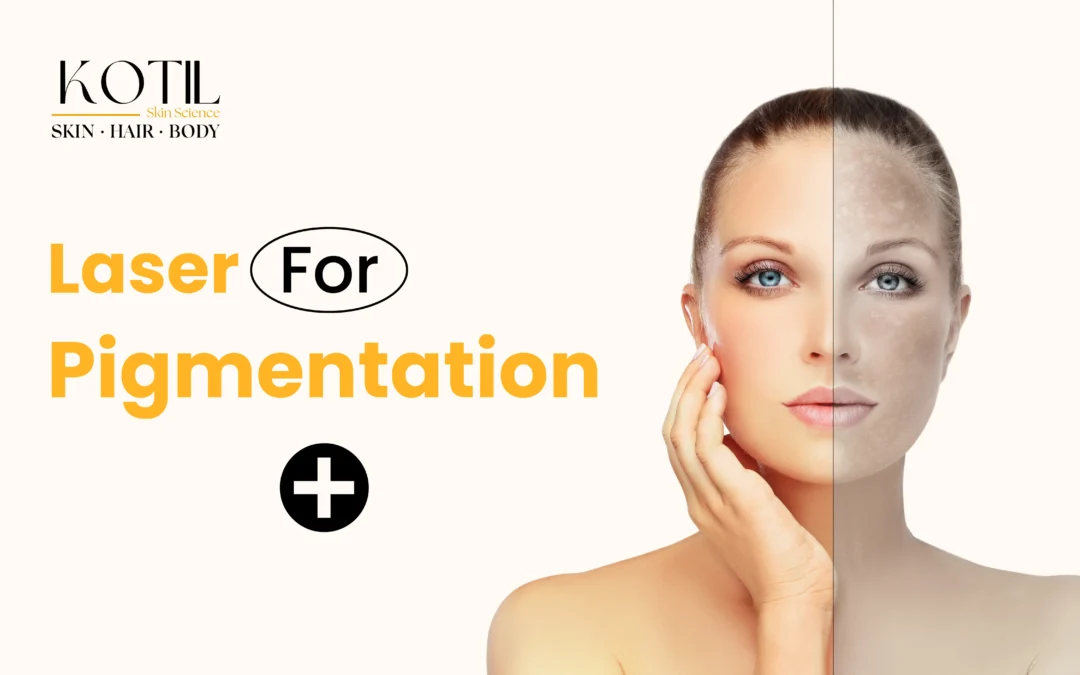Introduction
Searching for the best laser for pigmentation? If you’ve struggled with dark spots, uneven skin tone, or stubborn marks that refuse to fade, laser treatments may be the answer. In India, where sun exposure and pollution are everyday challenges, pigmentation is one of the most common concerns. Thankfully, medical lasers now provide a safe and effective way to restore clarity and brightness. This article explores how lasers work, who can benefit, and what to expect during treatment.
Why choose laser for pigmentation?
Pigmentation is not just a cosmetic concern; it impacts confidence and lifestyle. Traditional creams or facials may lighten spots slightly, but they rarely target deeper pigment. This is where laser for pigmentation becomes important.
- Lasers break down melanin clusters directly.
- Treatments are fast and minimally invasive.
- Indian skin tones respond well with the right wavelength.
- Results appear in weeks and can be long-lasting with maintenance.
Moreover, unlike salon facials, laser procedures are doctor-supervised, ensuring both safety and results.

What causes pigmentation problems?
Before opting for treatment, it’s essential to understand why pigmentation occurs.
- Sun exposure: the biggest culprit in India, leading to tanning and sunspots.
- Hormones: pregnancy or birth control often trigger melasma.
- Aging: natural wear causes freckles and age spots.
- Post-acne marks: inflammation leaves behind dark scars.
- Lifestyle: stress, poor diet, and lack of sunscreen worsen pigmentation.
Therefore, while creams and home remedies may help, lasting relief often requires targeted therapies like laser for pigmentation.
How does laser for pigmentation work?
Lasers use concentrated beams of light to target melanin, the pigment responsible for dark spots.
- Step 1: Light energy penetrates the skin without damaging surrounding tissues.
- Step 2: The pigment absorbs this energy and breaks into smaller fragments.
- Step 3: The body naturally clears these fragments over time.
As a result, the skin looks clearer, smoother, and more even-toned.
Types of laser treatments for pigmentation
Q-switched lasers
These are the most commonly used laser for pigmentation in India. They deliver short, powerful pulses that shatter melanin. Effective for freckles, sunspots, and post-acne marks.
Fractional lasers
Best for pigmentation combined with scars or rough texture. They resurface the skin while lightening dark patches.
Nd:YAG lasers
A versatile option that works on deeper pigment and is safe for darker skin tones.
CO₂ lasers
Primarily for scars but may also reduce pigmented lesions with careful settings.
Pigmentation vs. Melasma: Does laser work for both?
Yes, but the approach differs.
- Pigmentation Treatment: Lasers are often the first choice for freckles, sun damage, and stubborn marks.
- Melasma Treatment: Lasers must be used cautiously. Doctors often combine them with medical creams and sunscreen for long-term control.
Therefore, a consultation is essential to decide the best plan for your skin type.
Benefits of laser for pigmentation
- Quick results: noticeable improvement after a few sessions.
- Safe technology: minimal side effects when handled by experts.
- Targeted action: only pigmented cells are affected.
- Confidence boost: clearer skin enhances self-esteem.
- Multi-benefit: also improves glow and reduces fine lines.
In addition, many patients report smoother texture and more youthful-looking skin.
Other complementary treatments
While lasers are powerful, doctors often combine them with other procedures:
- Filler Treatment: adds volume and smoothness for a youthful look.
- Anti Aging Treatment: reduces wrinkles and tightens skin alongside pigmentation correction.
- Chemical peels: exfoliate dull layers for added brightness.
- Topical creams: maintain results and prevent recurrence.
This holistic approach ensures natural, balanced outcomes.
What to expect during a laser session
- Consultation: assessment of skin type, medical history, and pigmentation depth.
- Preparation: cleansing and application of cooling gel.
- Laser procedure: pulses of light are delivered across the affected areas.
- Aftercare: sunscreen, moisturizers, and post-procedure instructions.
Sessions usually last 20–40 minutes, and downtime is minimal.
Pre- and post-treatment care
Before the session:
- Avoid sun exposure for at least two weeks.
- Stop harsh exfoliants or strong creams a week prior.
- Inform your doctor about ongoing medications.
After the session:
- Apply sunscreen SPF 50 regularly.
- Use gentle cleansers and moisturizers.
- Avoid saunas, hot showers, or workouts on the same day.
- Follow doctor’s advice on topical creams.
As a result, your outcomes will be more effective and long-lasting.
Why choose Kotil Skin Science
Kotil Skin Science specializes in Cosmo-Aesthetic Treatments covering both skin and hair. The clinic is trusted for:
- Advanced laser machines safe for Indian skin
- Expertise in Pigmentation Treatment and Melasma Treatment
- Doctor-led consultations with transparent protocols
- Add-on services like Filler Treatment and Anti Aging Treatment
So, if you’re searching for reliable laser for pigmentation, Kotil Skin Science provides results backed by safety.
FAQs
1. Is laser for pigmentation safe?
Yes, when performed by certified doctors with the right technology.
2. How many sessions are needed?
Most patients require 4–6 sessions, depending on severity.
3. Can laser for pigmentation remove melasma?
Yes, but Melasma Treatment often combines lasers with creams and strict sunscreen.
4. What’s the downtime after laser treatment?
Minimal—mild redness may last a few hours.
5. Do results last permanently?
With sun protection and maintenance, results last long, though touch-ups may be needed.
6. Can I wear makeup after treatment?
Usually after 24–48 hours, depending on doctor’s advice.
7. Are there side effects of laser for pigmentation?
Mild redness or dryness, which subsides quickly.
8. Is it suitable for all skin types?
Yes, especially with Nd:YAG lasers, which are safe for darker tones.
9. Can laser improve acne scars too?
Yes, fractional lasers treat both scars and pigmentation.
10. How soon will I see results?
Initial glow appears within 2–3 sessions.
11. Can men undergo laser for pigmentation?
Absolutely. Men often seek it for tanning, sunspots, and marks.
12. Is sunscreen mandatory after laser treatment?
Yes, sunscreen is critical for maintaining results.
13. Will insurance cover pigmentation treatment?
Generally no, since it is considered cosmetic.
14. How do I book a session with Kotil Skin Science?
Use the Book Appointment button on their website or call directly.
15. Can laser be combined with Anti Aging Treatment?
Yes, many patients combine both for younger, brighter skin.
Conclusion
Pigmentation can make skin appear tired and uneven, but modern technology offers hope. Choosing laser for pigmentation provides safe, quick, and effective results when done by experts. Whether it’s freckles, sun damage, or melasma, lasers help you achieve healthier, glowing skin.
for healthy, glowing skin & hair.

